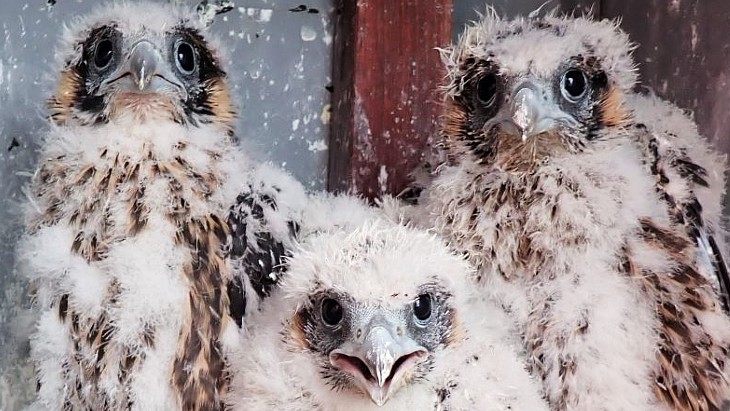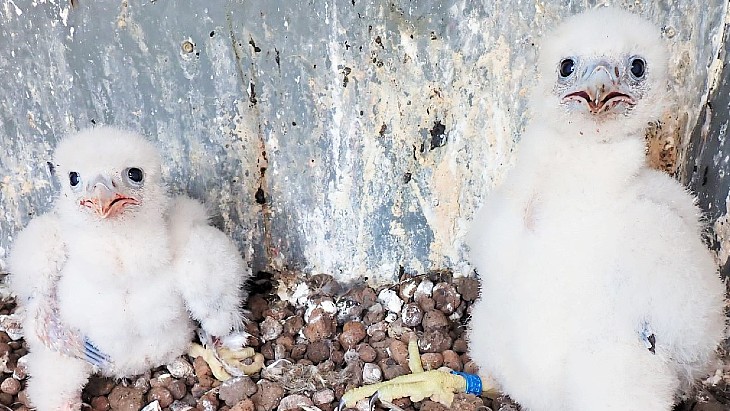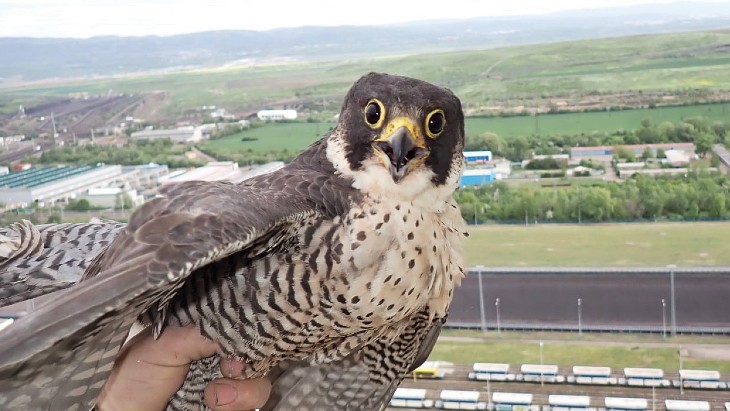
(Image: ČEZ)
The total of 16 includes one chick at the Temelin nuclear power plant. Ornithologists from Alka Wildlife placed the first aluminium falcon boxes on high-rise power plant buildings in 2011 and, as ČEZ said, it has "grown from an experimental phase to the level of a stable 'falcon farm' over the course of 12 years".
 (Image: ČEZ)
(Image: ČEZ)ČEZ's Jan Kalina said that non-essential activities are paused in the areas of the falcon boxes during the nesting period, with ornithologists allowed to enter the operations for the purpose of monitoring, including placing cameras and ringing the young.
According to the UK's Royal Society for the Protection of Birds, peregrine falcons require extensive open terrain for hunting, with traditional nesting sites being cliff-ledges, quarry faces and crags, but adds that they have "recently started to use man-made constructions, especially tall buildings". The guide goes on to explain: "The peregrine feeds primarily on birds, which it catches in flight. It spots the prey at distance and, once positioned correctly, it stoops at speeds of up to 180 kph for the catch. To enable the bird to breathe at this speed, it has special baffles in its nostrils, which control breathing."





_91467.jpg)
_47120.jpg)
_16439.jpg)






